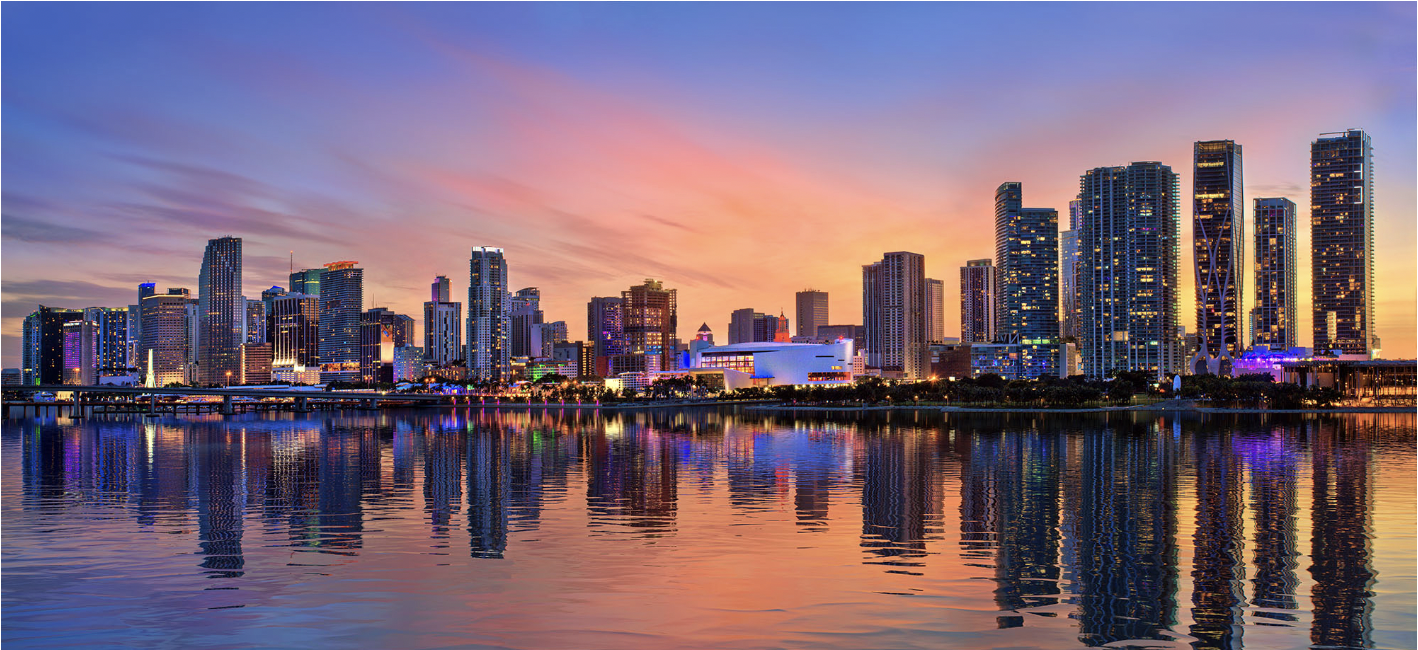The whole world grapples with addressing global sustainability issues. For this project, I could have chosen any country, region or city in the world.
Why Focus on the United States?
The United States is a country located in the global north with an exponentially rising Gross Domestic Product (GDP). Often, high levels of economic growth intensify environmental degradation, pollution, and high natural resource consumption rates.44 5 Annually GDP ebbs and flows but still, the United States has immense financial influence. In 2022, the US had the largest GDP of $25.44 Trillion, while China followed at $17,963,171.44 42 In my examination, I am focusing on America due to its potential to assist in combating climate challenges given its economic strength.
Why Focus on Miami-Dade County?
Miami is a vibrant city home to diverse culture, rich art, art deco architecture, wonderful natural beauty and influential corporations.15
Within the county of Miami-Dade is the city of Miami, the largest city by population in Florida. This county is a unique case study as it is in close proximity to the Everglades National Park, a swampy grassland which provides the region various ecosystem services such as flood protection, water, biodiversity, tourist attractions, and much more. Moreover, Miami is perfect for examining the threats of climate change and global warming as they sit along the coast line at a low elevation.15
Quick Facts & Demographics for Miami-Dade County (2022 data)
- 1,899.9 square miles of land area
- 3rd largest county in Florida
- Residence’s Ancestry
- 2.5% Italian14
- 1.3% English14
- German 1.9%14
- 1.4% Irish14
- & others
- Languages
- 25% of residents speak English at home14
- 75% of residents speak a language other than English at home14
- 66.2% speak spanish at home
- Foreign Born population is 54.3%14
- ± 0.7% from last year14
- 40.1% of the population are not US citizens14
- Age Range
- 17.2% of residents are 65 Years and older in ± 0.1% from last year14
- Resident Mobility
- 1.5% ± 0.2% moved from a different State into Miami-Dade14
- Miami has over 5.4 million residents however, it is on a population decline (button learn more…)3 27
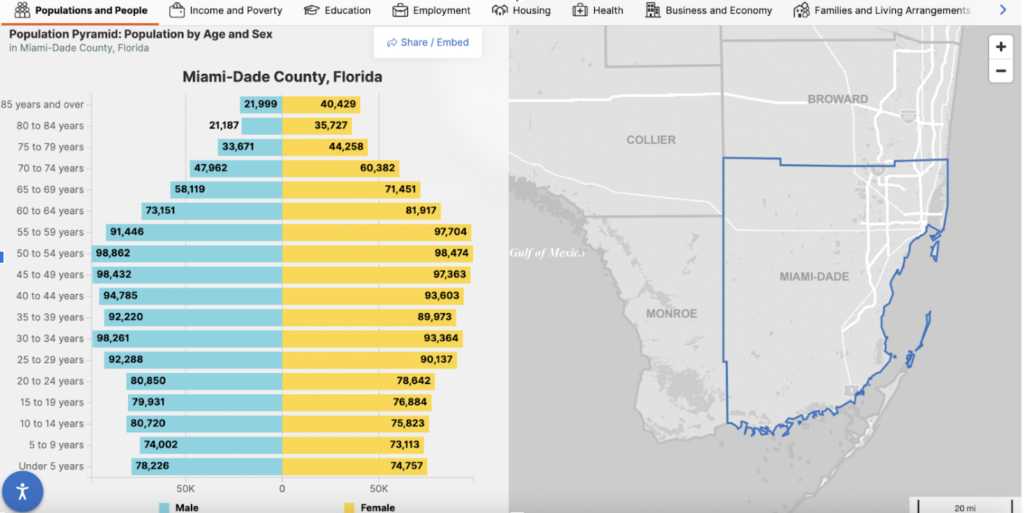
Miami’s Shrinking Population
Miami’s population has been on a downward trend since the pandemic. This trend can likely be attributed to a declining quality of life and an increase in housing prices. 3 Between 2020 to 2022, the population fell by 1%, with over 100,000 residents moving out in 2021. This number is shocking once you consider the massive influx of residents moving to the city during the pandemic.35 Other factors speculated to be fueling this population loss is a decrease in immigration from Latin America as interest in immigration from that region has been plummeting.35 Overall, Florida’s positive growth story seems well intact, however, Miami-Dade is facing a unique declining permanent population challenge.

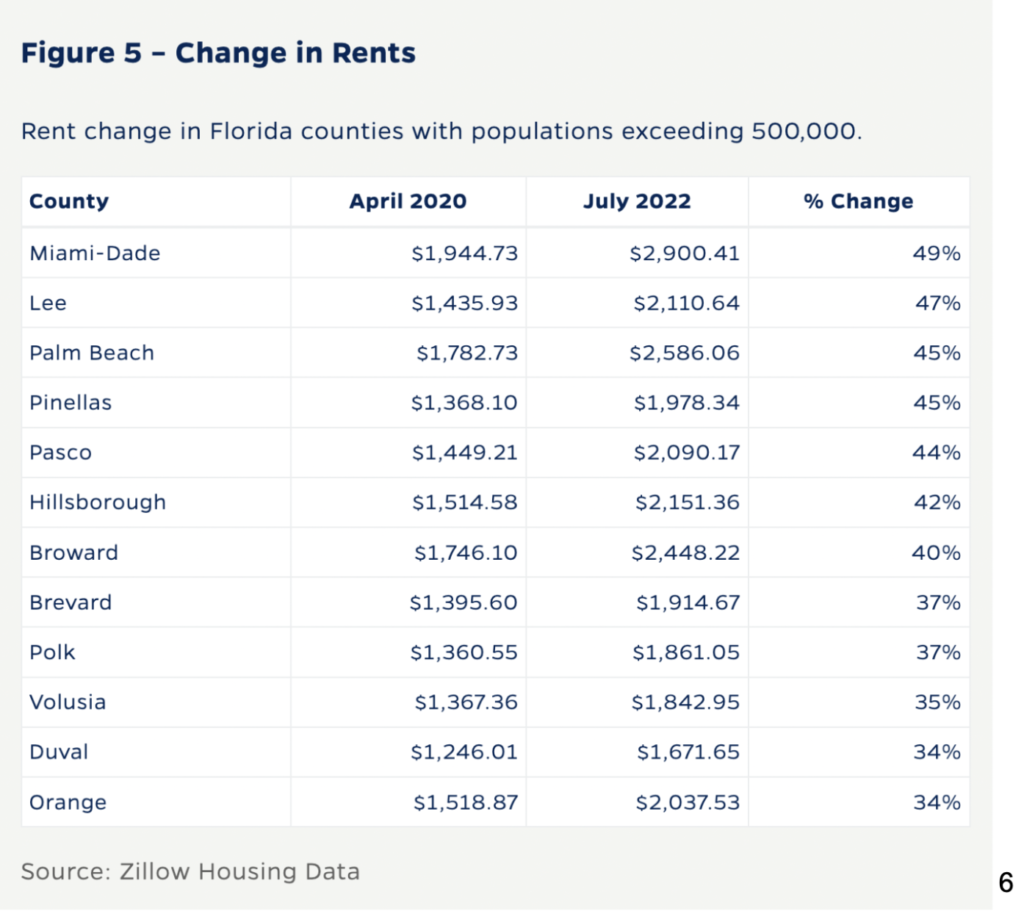
History & Population:
Indigenous People/ Colonial History
The Miccosukee Tribe, are the indigenous people who took refuge in Southern Florida’s everglades and inhabited areas of Alabama and Georgia.
Originally Creek Indians, as part of the Seminole Tribe, they spoke Mikasuki, derived from the Hitchiti language. Before moving to the United States, the Miccosukee Tribe fought against the U.S. government during the Seminole Wars of the 1800. Once they separated from the Seminole Tribe in 1962, the Miccosukee Tribe was officially recognized by the U.S. government.
Currently, the tribe populates three state reservation areas: Tamiami Trail, Alligator Alley and Krome Avenue. There are around 550 tribe members. The Tamiami Trail Reservation is the center for the Miccosukee Indian population. The reservation is the perfect place for Tribal operations as it is 40 miles out of Miami enabling easy access to major local political figures.
Tribes Key Activities: Hunting, fishing, agriculture
Core challenges the tribe faces:
- Acknowledgement of sovereignty
- General public’s failure to recognize the validity of the tribe’s cultural view
- Awareness and importance of the value of traditional/historic places 33 34
View the Miccosukee Casino & Resort owned by the Miccosukee Tribe of Indians of Florida.
Mayor of Miami-Dade, Daniella Levine Cava created Miccosukee Day “to honor the rich cultural heritage of the Miccosukee Tribe and all Indigenous peoples and recognize their many contributions to the County.” This celebration was in an effort to acknowledge previous wrong-doings and build bridges for a community of understanding.34 29
Learn more about the tribe on the Florida Department of Transportation’s (FDOT) website, Miami Beaches’ website as well as on the Miccosukee Casino & Resort. View their Laws, Protocols, contact information and US Tribal Directory.
Miami Culture
The city is surrounded by nature preserves and has bright neighborhoods like North, South, West and Downtown Miami.
On the south is Coral Way and Coconut Grove. Coconut Grove sits on the shoreline of Biscayne Bay and is home to City Hall, nightclubs, bars, restaurants, upscale shops/ cafes and much more. It is frequently visited by local college students.
Little Havana is Miami’s traditional immigrant neighborhood. Located in the west of the city, it is home to mostly Central American and Cuban immigrants.4 27


Religious and Political Breakdown
See Figures below:
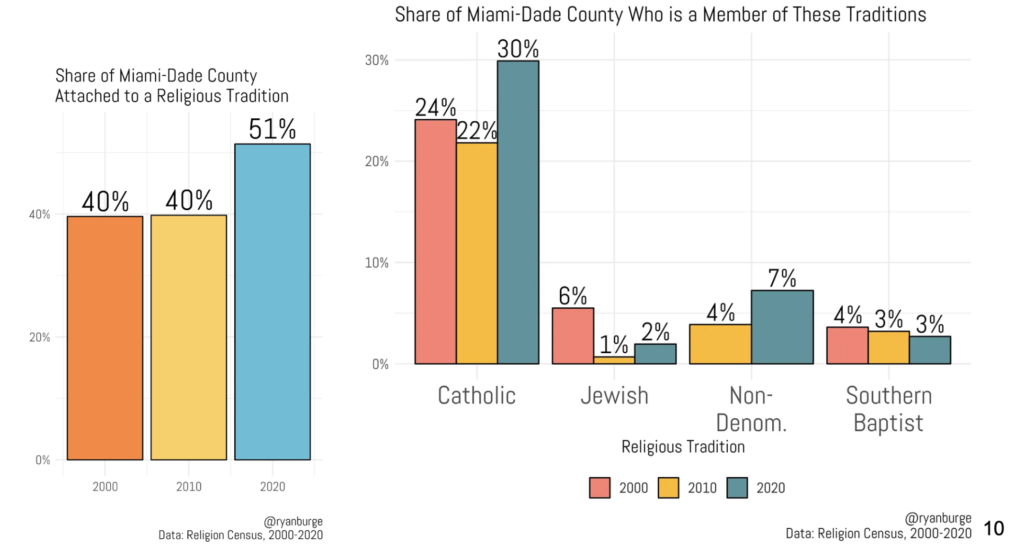
Government
The United States Government
In the United States government is a democracy that operates on federal, state, county levels. All state governments must follow federal laws, however individuals states and counties can create regulation to meet their resident’s needs.
The Miami-Dade County’s Government
Miami-Dade’s governmental body is the Board of County Commissioners. This group of elected officials has the ability to create policies and services that impact beyond the city’s boundaries. All policies must align with the US Constitution and general Florida State laws.
The elected Mayor supervises the county’s operations and has the ability to veto, or block the decisions of the Commission, with logical reasoning or in other words, they must have evidence and a understandable argument which led to the conclusion.44
Become more informed about Miami-Dade’s governmental structure here:
Illustrated below is the breakdown of Miami-Dade voters in the 2020 election.
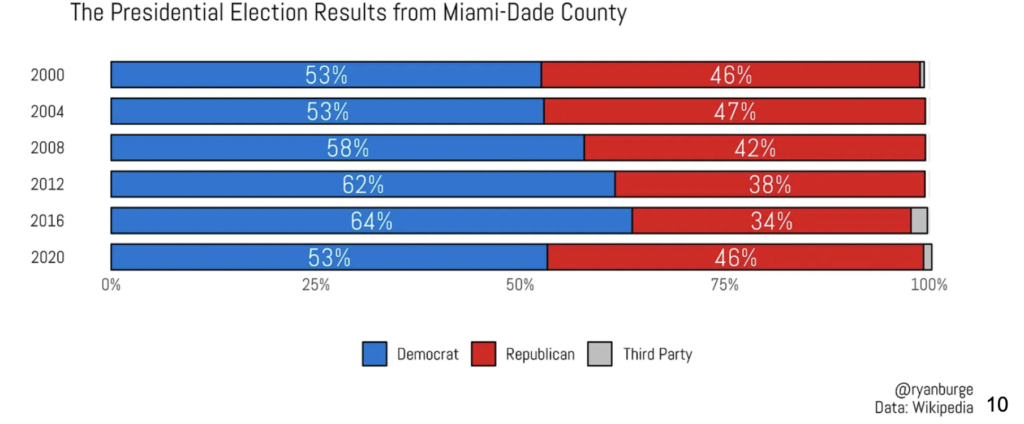
The Mayor of Miami-Dade County
Daniella Levine Cava is Miami-Dade County’s Mayor who has been in office since 2020, when the area experienced significant and unprecedented losses at the community and economic level. Due to investment halts in the county, Cava chose to capitalize on the opportunity of the COVID-19 Pandemic.
Values of Cava’s time in office
- Rebuild stronger than ever in a manner that…
- Protected and preserved natural environments
- Supported safe communities
- Enable residents to develop good skills in order to receive quality jobs22
Based on Cava’s 2024 Inaugural speech, she is striving for Miami-Dade to be a forward-thinking, opportunity-rich, technologically advanced community.26
What does this look like?
During Cava’s term, she…
- Outlined equitable economic growth plans
- Invested in infrastructure and programing where residents can feel empowered
- Accelerated building recertification and re-strengthened thier building code22
Governmental Collaboration
The current Mayor of the City of Miami is Francis Xavier Suarez. He is the 43rd mayor of the city and son of the former mayor Xavier Suarez. Suarez works with Cava on the legislation side. He has the ability to declare emergencies, and hire/fire the city manager who runs Miami’s government.25
Government Resources
Review the Governmental, Regulatory and Economic resources on Miami-Dade’s Website
View information about border control
Economy
Miami is a global city with significant influence in finance, commerce, media and entertainment, and international trade. It is home to the largest concentration of international banks found anywhere in the US and has many corporate headquarters. Its ports receive a large volume of cruise ships as it acts as the headquarters for many cruise lines.27
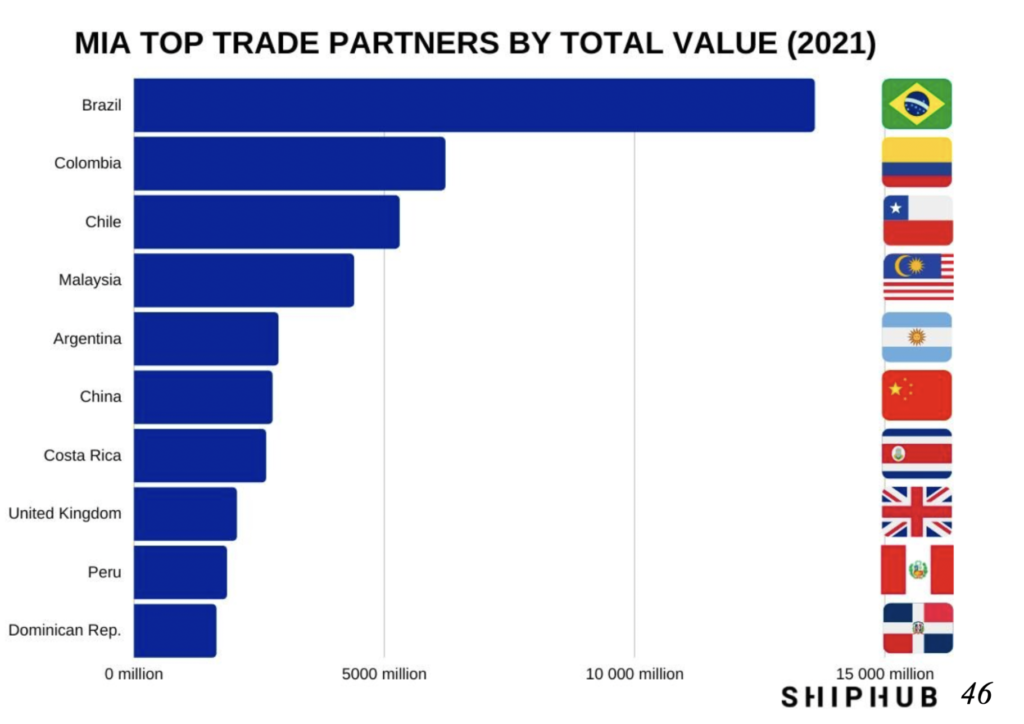
Prominent economic industries are… Tourism, Ecotourism, Agriculture, Machinery Parts and cosmetics and more.46
Agriculture is a large sector of Miami-Dade’s economy. The county is a major supplier of fruits and vegetables, but it still only produces about half of plant-based calories that its residents need.46 47
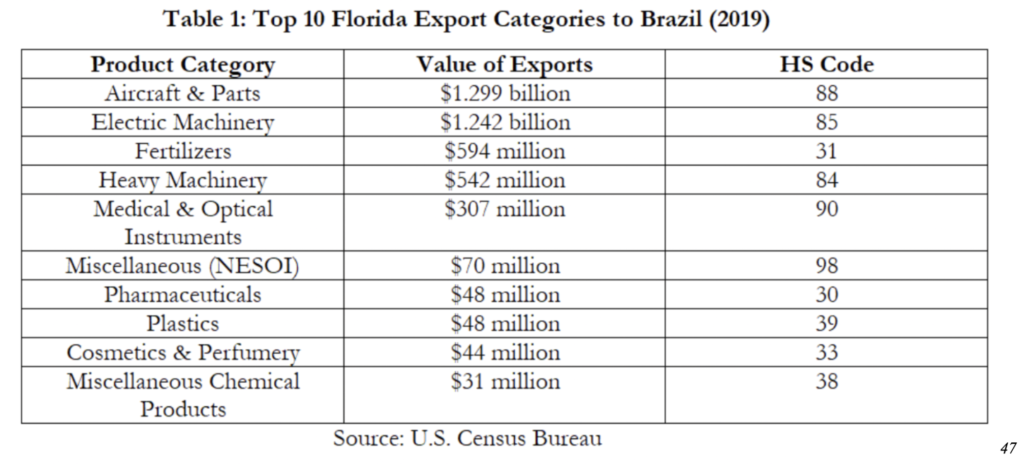
Miami-Dade County generates an annual GDP of about $185 billion.
In the past year…
- The Strategic Procurement initiative started at the Miami-Dade Vendor Academy. This supported local employers in obtaining resources from the county.
- 6,000 new jobs were created
- Unemployment dropped to 1.6%, significantly below the state average 3%
- South Florida was recognized amongst 31 cities by the U.S. Department of Commerce as a leading technology hub, the only amongst the group that was acknowledged as being focused on climate solutions. 22
Unfortunately, the county declared a housing affordability crisis in April of 2022.22 This has forced many into homelessness. You can learn about their homelessness relocation effort, Public Housing and Community Development (PHCD).
For more information on Regulatory & Economic Resources, view the links.
Henry Flagler
Henry Flagler is a significant Floridian figure due to his immense impact on Florida’s east coast. He created the Florida East Coast Railway which traveled from Daytona to Key West. The railroad was destroyed during a hurricane in 1935, however, its existence enabled the tourism and agriculture sectors of the economy to grow exponentially in the area. Flagler’s contributions to Florida supported the development the city of Miami we know today.12 16
Learn more about him on the Henry Flagler Museum’s website.
Geographic Information: Weather & Natural Resource
Once pine and palmetto flatlands, Miami is now a thriving urban coastal city located in southeastern Florida. At sea-level elevation, it is bordered on the east by Biscayne Bay and part of the Atlantic Ocean, providing the city harbor natural protection. The Miami river runs directly through Downtown Miami and drains out of the Everglades. Miami is characteristically known for its magnificent sandy beaches, vibrant coral reefs and luxuriously green vegetation.32
Miami is a subtropical climate. This means it experiences long hot and humid summers with mild and wet winters. This can be explained by its close proximity to the Tropic of Cancer and The Gulf Stream, or the ocean current that carries warm water from the Gulf of Mexico into the Atlantic Ocean.41
Miami-Dade County has moderate yearly temperatures. Recently, temperatures are becoming less predictable due to two factors: Whether the county is in El Niño & La Niña AND climate change.
El Niño & La Niña
El Niño & La Niña are naturally occurring global climate patterns. They are linked with warming of the ocean’s surface temperatures within the Pacific Ocean.
These changes significantly impact global weather patterns, temperatures, and ocean conditions. Some impacts are viewed as negative while others positive. This change happens approximately every 2-7 years and persists 9-12 months per year. Most significant impacts are felt in the winter.21 39
La Niña conditions make southern Florida dry and warm in the winters. El Niño conditions are cooler and wetter than average.40 21
Hurricane season occurs during the wet season, from May to October. Miami receives one of the highest levels of rainfall among major U.S. cities.40 27
El Niño: A double edged sword
El Niño is linked to…40
| Less frequent hurricane activity in the Atlantic Ocean due to more prevalent vertical wind shear. |
| Above average precipitation which reduces wildfires risk however increases flooding risks. |
| Increased air pressures lead to high levels of storminess within the southern U.S.; severe weather conditions increase. |

The figure above, shows the impacts of El Niño. The Gulf Coast often experiences cooler & wetter conditions, due to the stronger impact of the subtropical jet stream. Frequency in storms are increasing in the south on average as more clouds, rain, and severe weather form.40
Major Habitat Types
Within the State of Florida, 45 main terrestrial, freshwater, and marine habitats are found.
Learn more about each on the Florida Fish and Wildlife Conservation Commission website underneath habitat tabs.18
Key habitats to Miami-Dade County: Urban City, Beach/Surf Zones, Coral reefs, mangrove forests, Biscayne bay (lagoon/estuary), coastal wetlands, the everglades marshes, hardwood hammocks, coastal strands and pine rockland forests.
Each of these essential ecosystems contain communities of organisms and their physical features. The living and non living communities are intrinsically interconnected and have unique threats to their existence, however they need each other’s support to continue to meet the needs of human and nonhuman populations. In this examination, it is important to be aware of this as the idea informs solutions and conservation methods.20 I will expand upon specific threats later in this web page.18
Note: Humans are a part of every ecosystem, no habitat is untouched by humans. Whether humans have physically transformed an environment or altered an environmental system through our activities, such as removing energy, matter etc. Humans are significantly responsible for the environmental repercussions. For this examination, it is helpful to think of habitats as…
- Highly modified (i.e. A city like Miami)
- Disturbed (i.e farmland, fields)
- Less distributed (i.e. sections of the Everglades, the deep ocean)
Coastal Stands
Are located between the beach and maritime hammock which contain sand dunes, rock formations, and salt tolerant vegetation. Florida visitors and locals can immerse themselves in nature and experience the unique plants, bird and animal species this habitat supports through enjoying Florida state parks and preserves. Learn more from State Park Websites.19 18
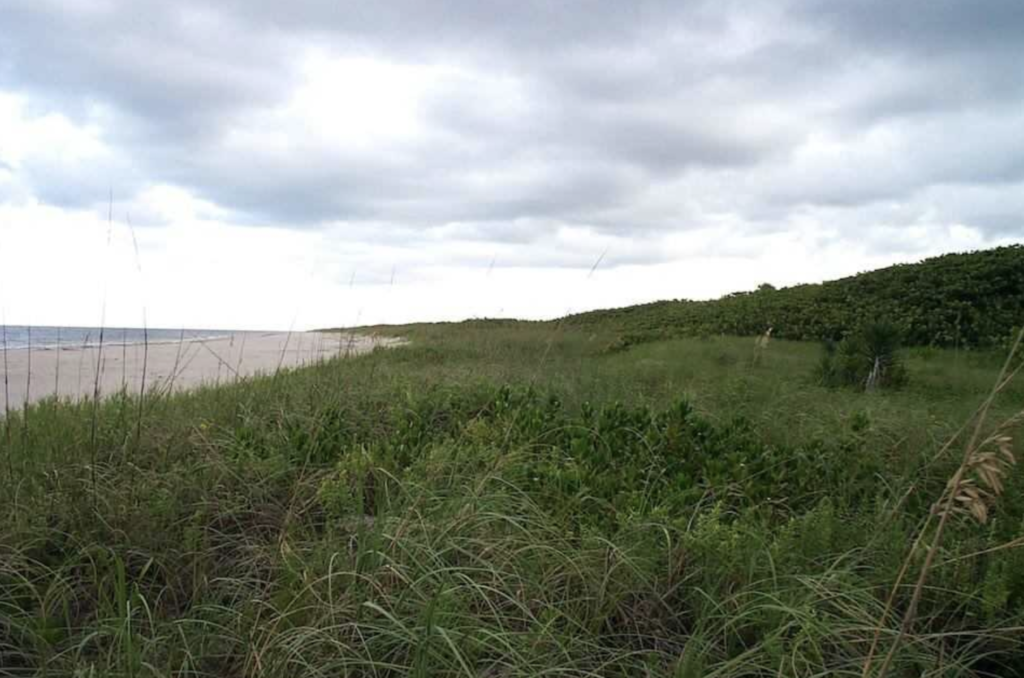
Biscayne Bay
Biscayne Bay is a National Park, contains two state marine sanctuaries, and is the largest estuary in Florida, giving it local, regional, national and international significance. The subtropical estuary is a critical wildlife preserve and is pivotal to the watershed management of Miami-Dade County as it contains the Biscayne Aquifer. This Aquifer runs from southern Palm Beach County to Florida Bay. While important for providing water, this aquifer prohibits underground construction in the city.27
Freshwater from the Everglades filters into the bay, mixing with saltwater from the ocean to create the perfect salinity for mangroves, oysters and seagrass beds to thrive. The bay provides a key habitat to endangered species, including the Florida manatee, the smalltooth sawfish, the American crocodile and Johnson’s seagrass, the first and only marine plant to be listed as “threatened” on the Endangered Species List. The area’s biodiversity is vast, however, due to amplified effects of climate change, the ecosystem is declining. This is problematic because, not only does the area provide locals and visitors with food, water, and recreational activities but the mangrove forests supported at the bay protects the land from erosion and flooding.
The 428 square mile preserve attracts roughly 2.8 million visitors every year, supporting residents’ economic liveliness. Read more about the direct impacts human activities have on this bay in Assignment 4 and 5.2 8
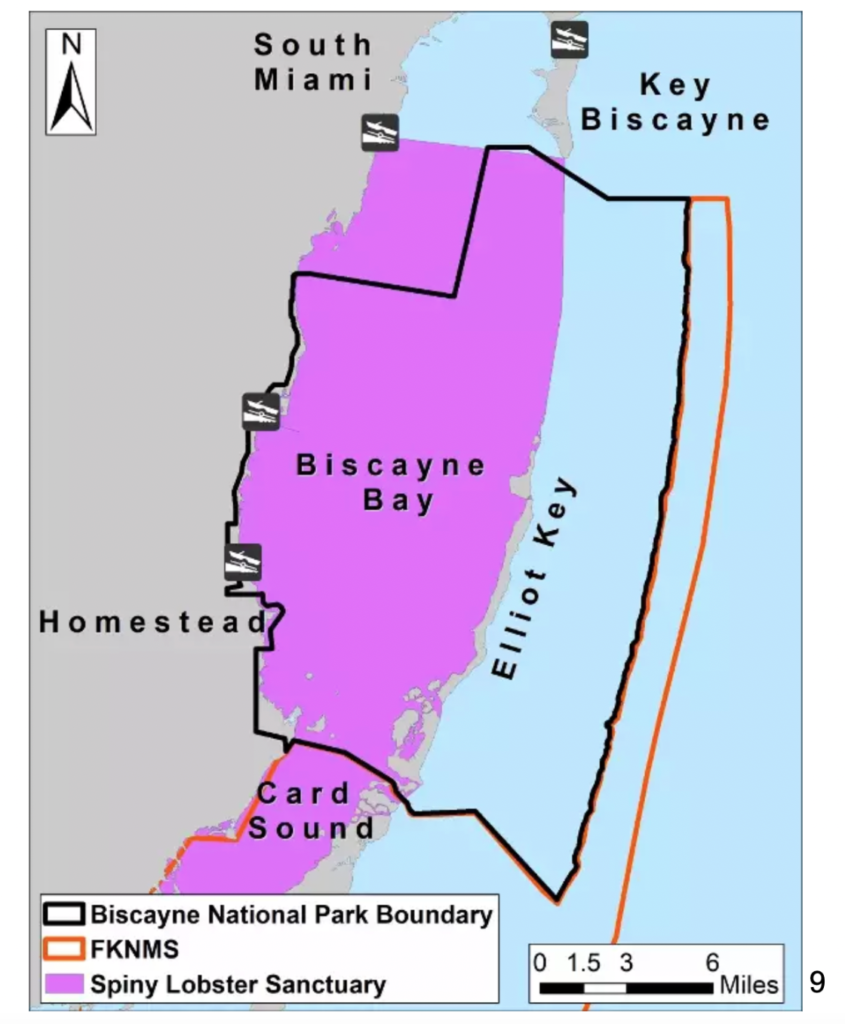
Environmental Impacts to Florida Ecosystems
Over the last decades Florida’s habitats have undergone substantial changes due to human activities such as…
- Dredging and filling activities
- Construction which have drainage canals and segmented habitats
- Land development
- Reduction of natural mangrove shorelines, tourism and commerce 2
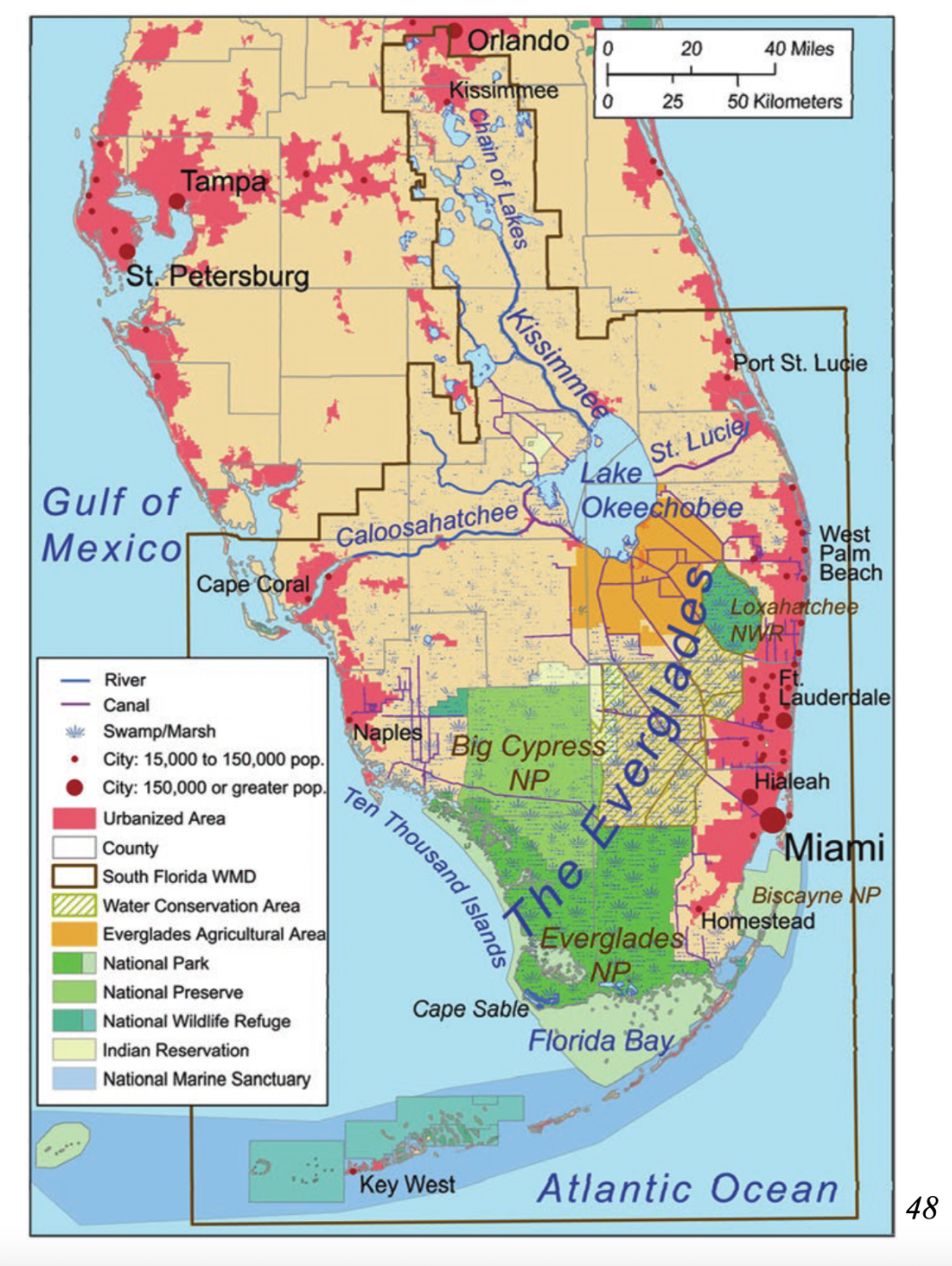
The map above illustrates the various conservation areas, agricultural areas, national parks and more in southern Florida. Included in this map are Loxahatchee National Wildlife Refuge, The Kissimmee River, Big Cypress National Preserve, Lake Okeechobee and the Everglades Agricultural Area.
All of these environmental and water systems are interconnected and rely on each other for the ability to thrive. When one ecosystem is negatively impacted, consequences cascade affecting other ecosystems. (Credit: NOAA) 48
Education System:
Miami is located in the United States of America which requires all children to go to some form of primary/elementary education (kindergarten-8 grade) followed by secondary education in (grades 9-12).37
Miami-Dade County Public Schools are nationally recognized for fostering student achievement. The county is a “choice school district” meaning that citizen tax dollars collected and equal funding is distributed to all of the schools which may include, public, private, charter and home schools. Citizens within the county choose which school they’d like their child(ren) to attend.
The district received the esteemed Broad Prize for Urban Education, after being a finalist for several consecutive years. Nationally the school district is the fourth largest public school district as it impacts 350,000 students each year. 7 13
Figure A describes the languages students speak at home. Figure B describes the faculty hired, average salary and teacher to student ratio. Figure C highlights various advanced placing methods students are enrolled in.
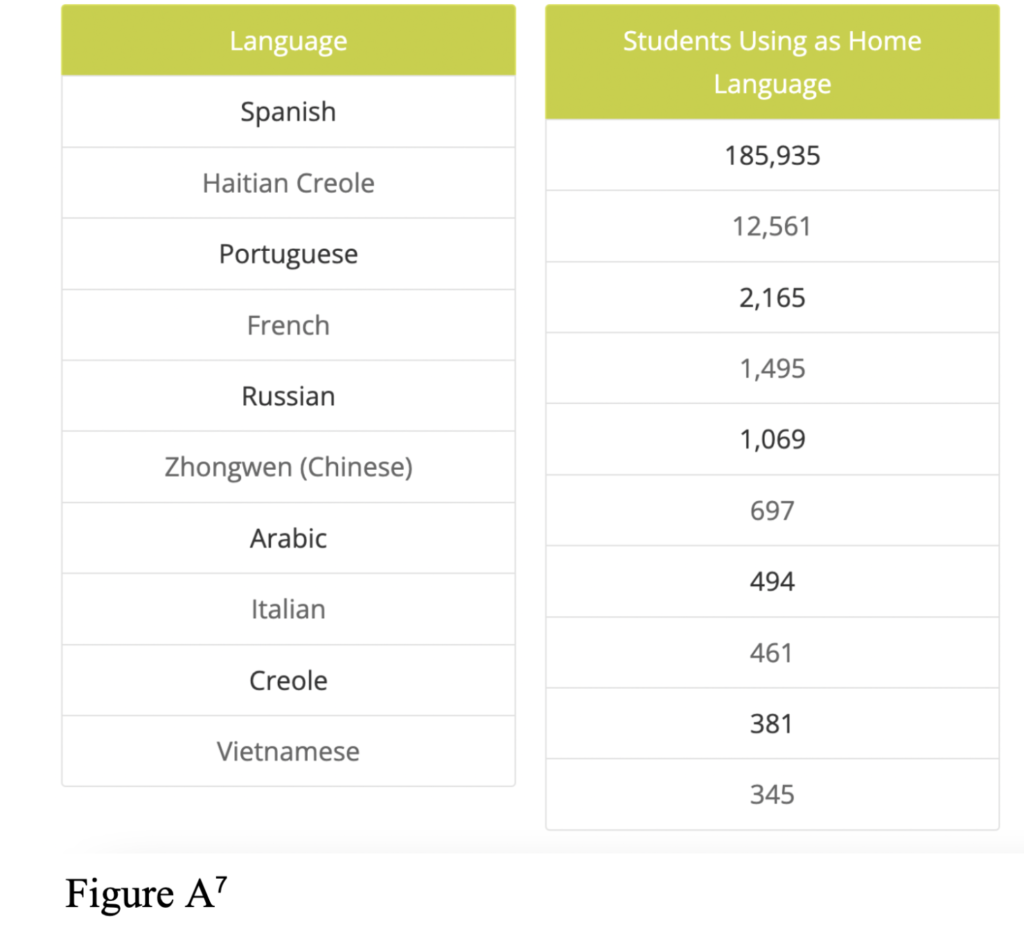
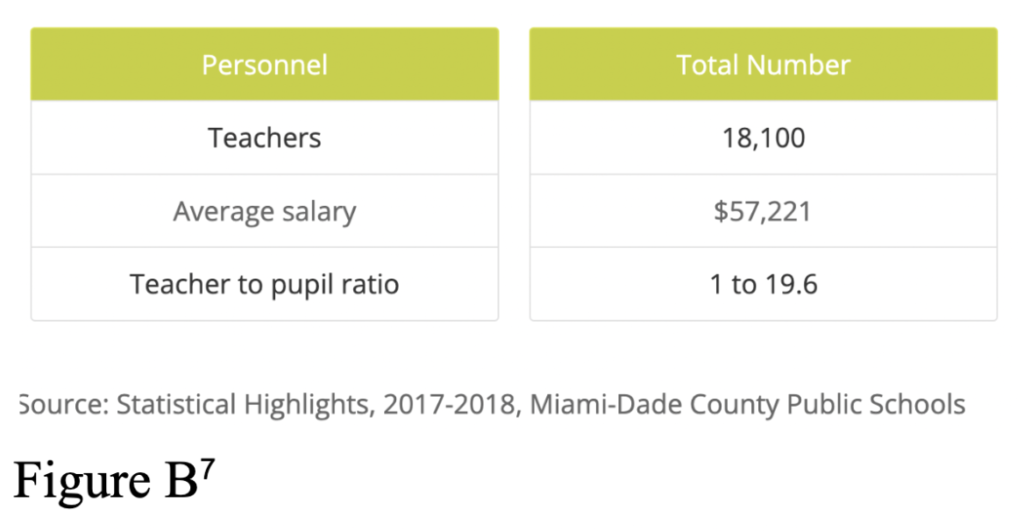
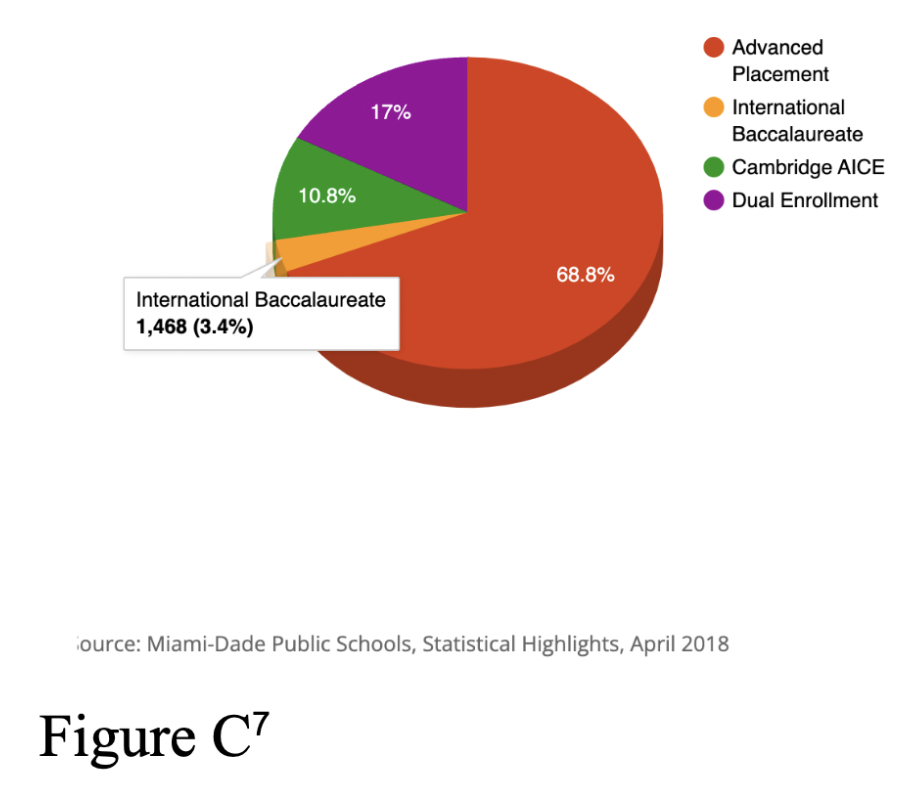
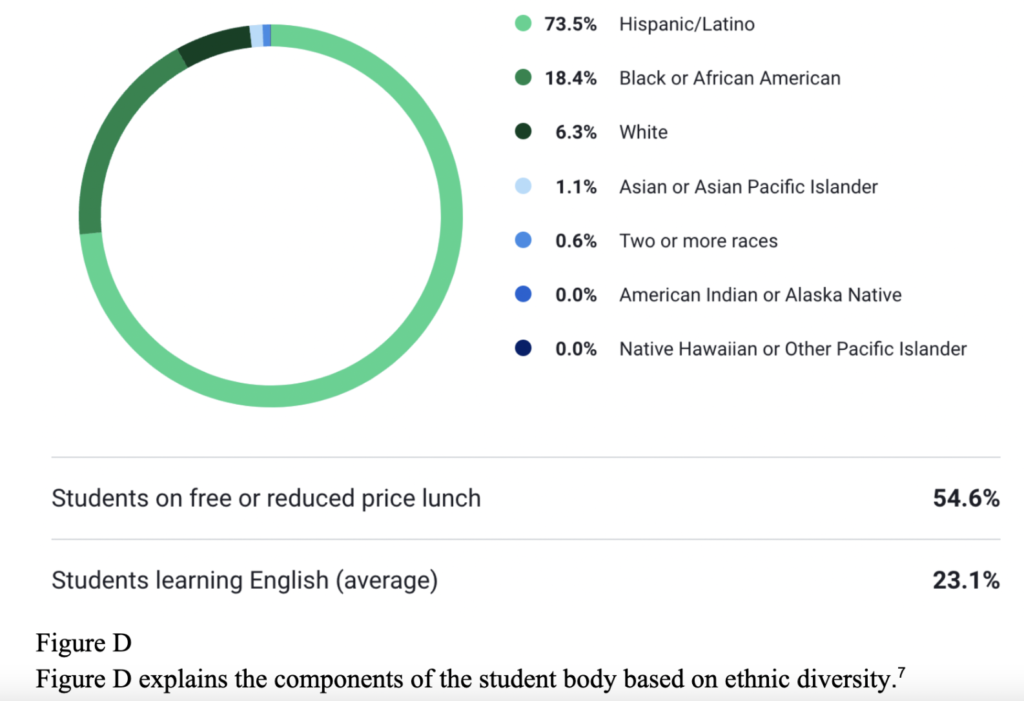
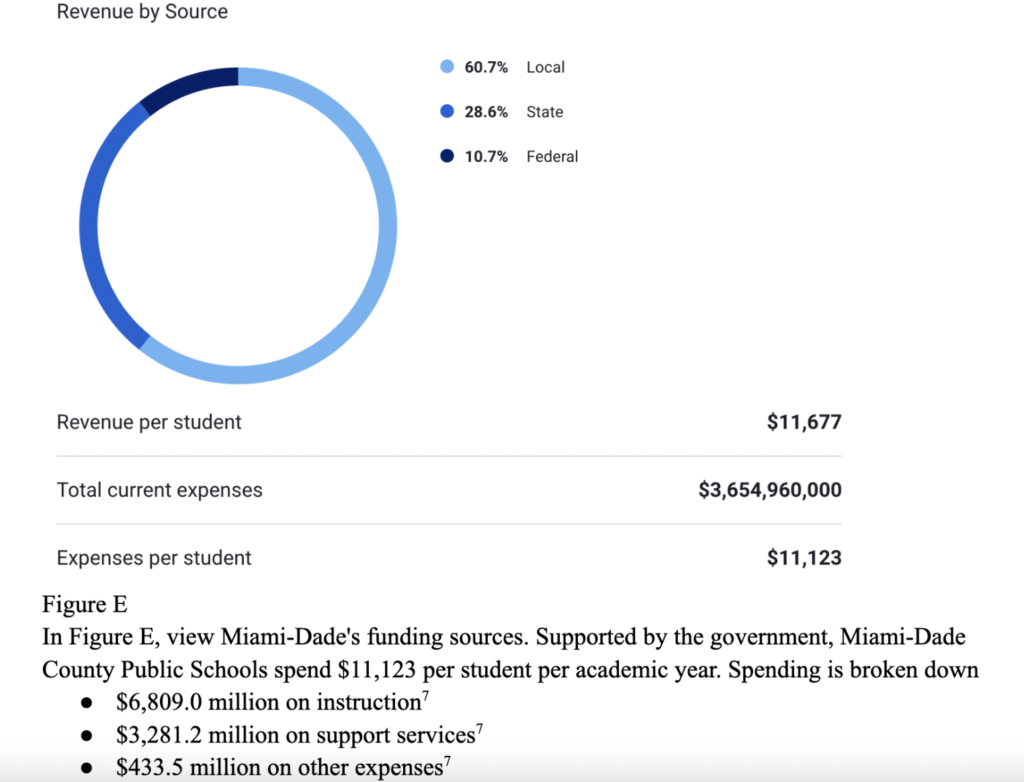
Healthcare
United States Healthcare Overview: US healthcare system is largely privatized making it inaccessible to many. There are various public programs and private insurances that US citizens can opt into. Many that are unable to provide insurance must pay out-of-pocket.
- Miami-Dade health offers free educational, clinical, community health and wellness services and more on their website:
- Explore Miami Center for mental Health and Recovery, a place for residents to receive comprehensive care when living with serious mental illnesses and substance use disorders.
- The Save Our Senior program was created by Mayor Cava. This program granted residents 65 and older a $617 check to provide homeowners funding relief.22
- This is a clever program as it supports retired individuals through the aforementioned unprecedented affordability crisis and enables them to prioritize investments into their community and local businesses.
View the 2022, community health assessment to learn more about specific issues.
Existing Sustainability Commitments, Priorities and solutions of Miami-Dade County
Miami-Dade has a comprehensive understanding of environmental social and economic issues within the context of sustainability.
Baseline research suggests that Miami-Dade County utilizes a “combination of regulation, environmental monitoring and habitat restoration projects” to effectively conserve their environmental assets and raise awareness of the importance of ensuring overall good health of all ecosystems.
Climate Denial
Despite Miami-Dade’s evident commitment to climate solutions, overall, Florida contains many climate deniers. Florida often make national news for
DEP officials have been ordered not to use the term “climate change” or “global warming” in any official communications, emails, or reports, according to former DEP employees, consultants, volunteers and records obtained by the Florida Center for Investigative Reporting.
Read more at: https://www.miamiherald.com/news/state/florida/article12983720.html#storylink=cpy
Read More Related News Articles:
Florida Officials Bans the words “Climate Change” and “Sustainability” 2011
Videos denying climate science approved by Florida as state curriculum 2023
Governor DeSantis, Leading a State Menaced by Climate Change, Shrugs Off the Threat 2023
Miami’s Key Environmental Challenges
- Climate Change
- Increased Frequency in Severe Weather events: Tropical Storms/ Hurricane Tornadoes/ Flooding
- Sea Level Rising
- Seawater intrusion
- Agricultural
- Sea Level Rising
- Change in temperature
- Saltwater Intrusion
- Loss of Biodiversity
- Loss of Tree Cover
- Loss of Native species
& More
In Mayor Cava’s most recent mayor’s remarks, she acknowledges how climate change is a global issue that should be addressed on the local level. She continues to list key programs and initiatives Miami-Dade has taken action in to minimize their negative impacts and maximize value.22
In 2019, Miami-Dade county declared a climate emergency and created the Climate Action Plan. Read it to learn about their climate goals, benchmarks, and key indicators.
Climate Resilience Initiatives:
- Mangrove restoration Oleta River 22
- Air quality regulations to decrease chronic disease rates
- Water purification through regulations and community events such as Baynanza and Plastic Free 305. View more (IN ASSIGNMENT 4)
- Ecosystem renourishment (see more in Assignment 7: Natural Resource Extraction)31
- Adopt a Tree Program: Set a goal to restore 30% of the previously existing tree canopy. Has planted 26,000 trees so far.22
Emission Reductions
- Building Efficiency 305 Challenge: In collaboration with the national City Energy Project initiative
- Climate Action Strategy aims to cut greenhouse gas emissions, create jobs, improve health and make life better.11
- Energy Management plan – Miami-Dade County Electricity Master Plan
- Various Incentive Programs to mobilize government stakeholders
- The Energy Cost Avoidance Program (ECAP)
- Save Energy and Money (SEAM)
- Internal Revenue Code 179D
- Green purchasing guidelines to support Department’s to purchase items which reduce waste.30
Partnerships
- Miami has applied for and received grants to help them achieve carbon neutrality by 2050.28
- Learn about Miami Foundation
- THRIVE305, the largest public engagement initiative in our HISTORY, which molded our actions derived for identified priorities of county residents 39
- Work with Miami Dade College to offer free Future Ready Scholarships to county residents39
There is evidence, as illustrated by the Miami-Dade’s Whole Community Hazard Mitigation Strategy that the county takes a proactive and precautionary approach to potential climate issues.23
- Biscayne Bay Foundation
- Miami Waterkeeper
- The Sierra Club Miami Group
- National Parks
- https://erams.com/water-connect/home/miami-fl-main/
- Division of Environmental Resources Management
- Sea Port
- Sea Port Association
- & possibly more
